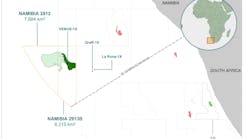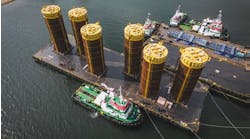View Article as Single page
Logistical acrobatics
Rig availability is largely a matter of supply and demand beyond the immediate control of drilling companies, as are the factors that dictate the availability of financial capital. Therefore, drilling companies have limited options to mitigating the impact of volatility.
More can be done in terms of human capital. Some companies are engaging in "logistical acrobatics" to minimize the people problem, incentivizing workers to remain offshore instead of departing for leave, or to work extra shifts. The "quasi-demotion/promotion" is another weapon in the arsenal, e.g. an assistant driller might be promoted to a driller on a per-project basis, and a tool-pusher might be "demoted" to driller to fill an urgent gap, while remaining on the higher tool-pusher rate of pay.
Some companies in the UK North Sea are reorganizing shift rotations to make hours more appealing to prospective workers. "Roving trips" are increasingly common, giving candidates a chance to travel and work on different rigs. Another measure (at least within larger organizations that have the capacity) is to identify when your international workers will be home, and use them at this point. For instance, a contractor working on a 28 days on/28 days off rotation in Angola may be amenable to a two-week shift in the North Sea while back home.
However, the real key to mitigating the impact of volatility on human capital is to widen the talent pool for recruitment, both geographically and by tapping other sectors. For historical and cultural reasons, many oil and gas companies remain reluctant to hire outside of the local market, at least in mature fields within developed Western economies (such as in the North Sea or Canada). Yet a planning engineer (for instance) is more or less the same whether from London or from Calgary.
A senior project engineer from Dubai who had secured permanent residency status in Canada was looking for work at a major Canadian oil and gas company. Having previously applied for various vacancies via the company's online portal without receiving a single response, he would come into the company's office nearly every day of his final visit to Canada, frantically seeking work prior to the daunting step of relocating his family. Yet he was routinely dismissed.
The company in question had installed a third-party recruitment specialist firm that same week. Once they reviewed the applicant's CV and talked to him, it became clear that his previous experience in Dubai would make him a very good fit for a role in the Canadian company, which he secured within three days. The worker proved a good hire, was rapidly promoted to project manager, and the company is now far less reticent about hiring from outside of the local market.
This is starting to happen among North Sea companies, which are increasingly recruiting those with experience on land rigs, particularly from North America and Eastern Europe. These workers require minimal training to get up to speed on offshore rigs, and there is often a greater economic incentive for them, especially for workers from Eastern Europe. For instance a land-based driller from Croatia may be able to double take-home pay when working in the UK North Sea. Roles in international waters, while attractive, are highly competitive – for these candidates the North Sea affords an opportunity to get into the offshore business and build valuable experience. And more and more, companies are offering staff retention bonuses that rise with every continued year of service, as a means of encouraging skilled workers to stay put.
The other major way to maximize the talent pool is for the industry to overcome a similar historical and cultural reluctance to hire sideways from other sectors that cultivate transferable skills. In certain countries such as Australia and South Africa this can mean taking advantage of similar roles in said countries' large mining sectors, and companies operating in the UK North Sea have access to a pool of ex-servicemen and women.
While companies can do more to mitigate the impact of the people problem than they can a lack of rigs or poor economy, there is still no magic solution. Companies need to be flexible and use all resources at their disposal to retain and attract talent. A common factor behind successful sideways and global hiring is the use of third-party workforce specialists such as recruitment agencies. It was a recruitment agency which – thanks to its understanding of the industry together with its experience in the Middle East – helped the Canadian company see the potential in the project engineer from Dubai. In a situation where demand is so high, and timing so crucial, positions can be routinely filled in mere minutes after becoming available simply by being able to tap into a global network of highly skilled workers. To have access to the full picture of just who is available, and when, can put firms at a major advantage.
Sources
Page 5, Oil and Gas UK Activity Survey 2014.
Page 13, Drilling Activity + Page 20, Exploration Outlook, Oil and Gas UK Activity Survey 2014
https://www.gov.uk/government/news/north-sea-still-attractive-for-oil-and-gas-industry
Page 14 onwards, Exploration and Appraisal Drilling, UK Oil and Gas Activity Survey 2014.
Page 16, UK Oil and Gas Activity Survey 2014.


